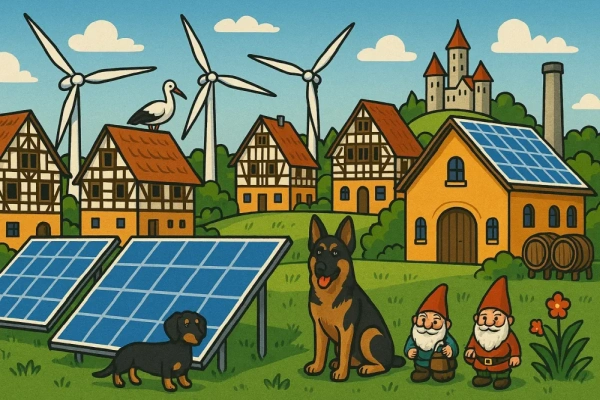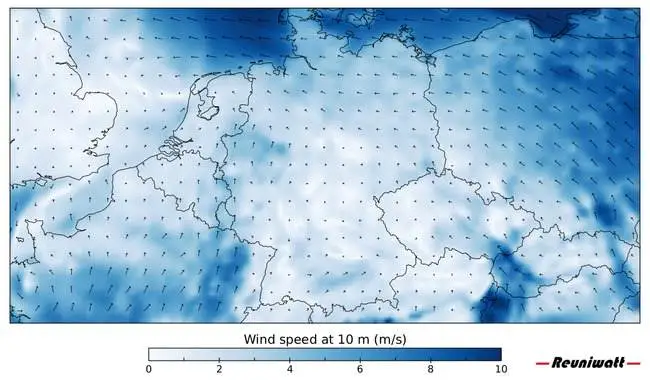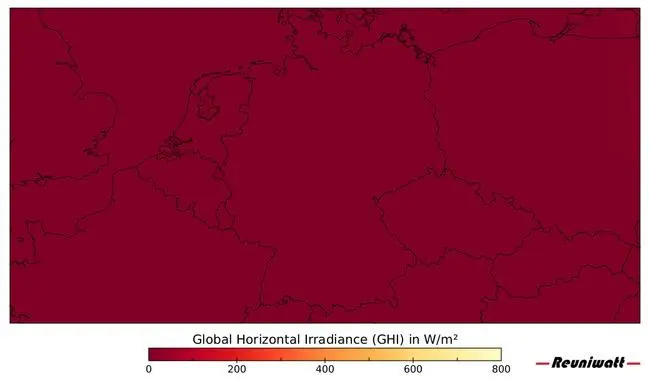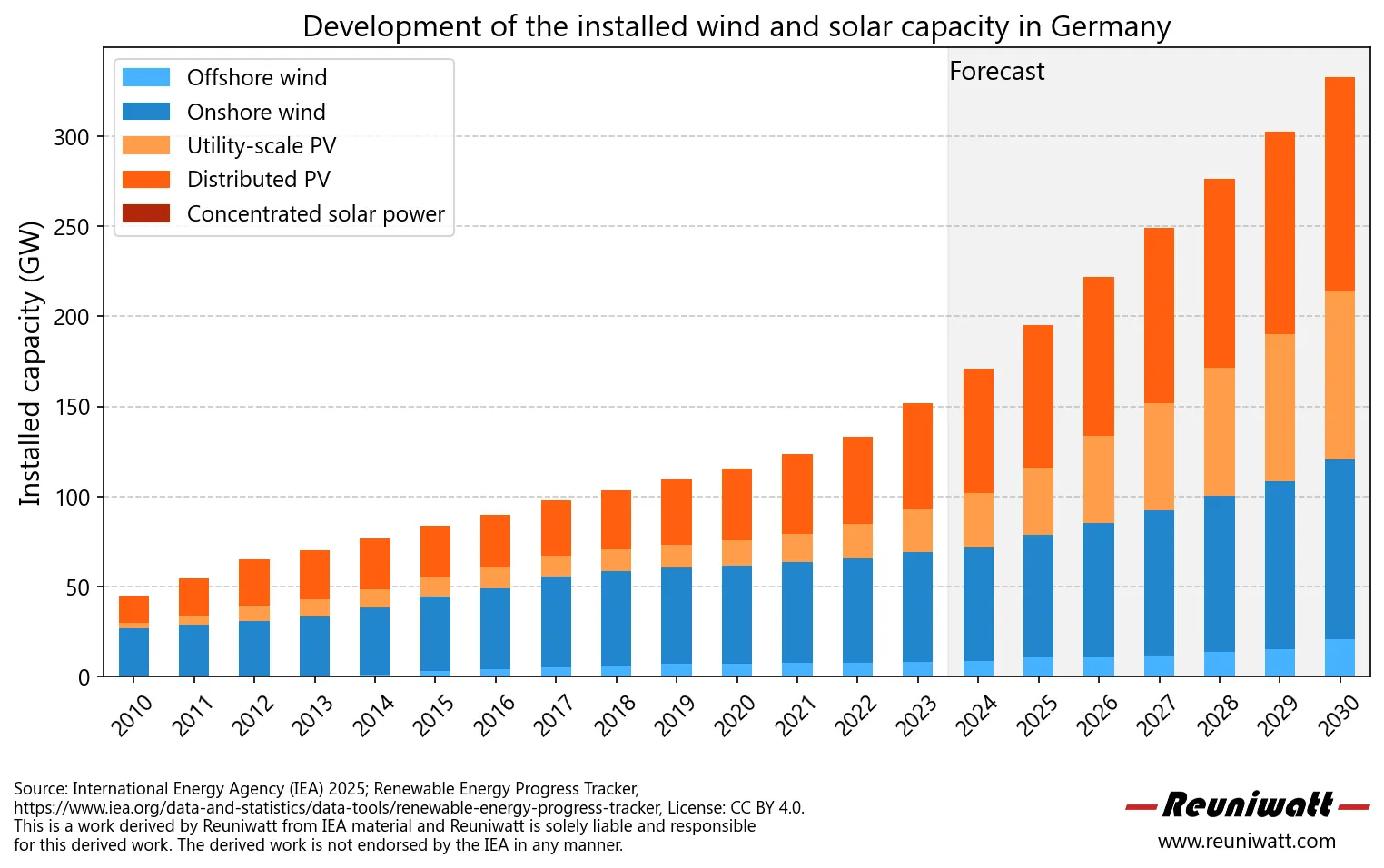Germany, a pioneer in the global energy transition, has long been at the forefront of wind and solar power development. With significant investments and strong public support, the country has built one of the world’s most advanced renewable energy infrastructures. Wind power, especially in the north, and solar energy, widespread across the south, play a central role in reducing reliance on fossil fuels. Nevertheless, Germany faces ongoing challenges related to grid stability, storage solutions, and the gradual phase-out of nuclear and coal energy.
Renewables market in Germany
Germany has long been a global leader in renewable energy, driven by its ambitious Energiewende (energy transition) policy, which aims to achieve a fully renewable and decarbonized power system. As of 2023, renewables accounted for over 50% of the country’s electricity generation, with wind and solar energy making up the largest shares. The country has heavily invested in onshore and offshore wind power, particularly in the northern regions, while solar capacity has expanded rapidly, especially in southern Germany. Despite this progress, challenges remain, particularly in grid integration, the phase-out of coal, and the need to expand transmission infrastructure to balance energy supply across different regions.
Wind energy is the backbone of Germany’s renewable sector, contributing around 30% of total electricity production. The country has one of the highest installed wind power capacities in the world, with a growing focus on offshore wind farms in the North Sea and Baltic Sea. However, the expansion of onshore wind has faced hurdles due to regulatory restrictions, lengthy permitting processes, and local opposition. Solar power, on the other hand, has seen continuous growth, with total installed capacity surpassing 70 gigawatts (GW) by the end of 2023. The declining costs of photovoltaic (PV) technology, combined with government incentives and corporate investments, have made solar a key component of Germany’s renewable energy mix. Battery storage solutions and grid modernization efforts are also accelerating to manage the intermittent nature of wind and solar power.
Looking ahead, Germany aims to achieve 80% renewable electricity generation by 2030 and complete carbon neutrality by 2045. The government has set ambitious targets to expand offshore wind capacity to at least 30 GW by 2030 and 70 GW by 2045, while also increasing solar PV installations. The electrification of sectors like transport and industry will further drive demand for renewable energy, and green hydrogen is expected to play a major role in decarbonizing heavy industries. However, significant investments in grid expansion, energy storage, and digital infrastructure will be required to ensure stability and reliability. As Germany continues its transition away from fossil fuels and nuclear power, its renewable energy policies and technological advancements will serve as a model for other nations seeking to accelerate their clean energy transitions.

Wind and solar capacities in Germany
As of the end of 2023, Germany’s renewable energy capacity has seen substantial growth, particularly in the wind and solar sectors. The total installed onshore wind energy capacity reached approximately 61 gigawatts (GW), following the addition of 3,567 megawatts (MW) from 745 new onshore wind turbines during the year.
When combined with offshore installations, the cumulative wind power capacity stood at 69,459 MW in 2023, marking a significant increase from previous years.

In the solar energy sector, Germany achieved a new milestone in 2023 by installing around 14 GW of new photovoltaic (PV) capacity, bringing the total installed solar capacity to 81.7 GW. This rapid expansion underscores the country’s commitment to enhancing its renewable energy infrastructure. Notably, approximately 70% of privately operated solar installations on buildings in 2023 were equipped with battery storage systems, reflecting a growing trend towards energy self-sufficiency and storage solutions.

Renewable energy market projections for Germany
Germany’s renewable energy sector is poised for significant growth in the coming years, driven by ambitious government targets and substantial investments. The Renewable Energy Sources Act (EEG) stipulates that the share of renewables in gross electricity consumption should increase to at least 80% by 2030, up from 51.8% in 2023.
This goal aligns with Germany’s broader strategy to achieve carbon neutrality by 2045. To meet these objectives, the country plans to expand its renewable electricity generation to approximately 288.90 billion kilowatt-hours (kWh) by 2025, with an anticipated annual growth rate of 3.92% from 2025 to 2029.

Wind and solar power will continue to be the primary drivers of this expansion. In 2024, renewable energy sources covered more than 60% of Germany’s electricity consumption for the first time, with solar power generation reaching a record 72.2 terawatt-hours.
The government aims to further accelerate the deployment of both onshore and offshore wind projects, as well as photovoltaic installations, to achieve its 2030 targets. However, challenges such as regulatory hurdles, supply chain constraints, and market dynamics, including a recent glut of solar panels leading to industry distress, may impact the pace of this expansion.
To support the integration of increasing renewable capacities, significant investments in energy storage and grid infrastructure are planned. Such developments are crucial for balancing intermittent renewable generation and ensuring grid stability as Germany progresses toward its renewable energy goals.
Our activities in Germany
Reuniwatt has been active in Germany for more than a decade and is committed to accompany German companies in the energy transition. Reuniwatt had already deployed sky cameras in Germany and is actively looking for collaboration with local actors on the energy market to improve intraday solar and wind forecasting as well as day-ahead solar and wind forecasting and boost assets’ performances. We are present in Europe and we are committed to expand our activities in the region.